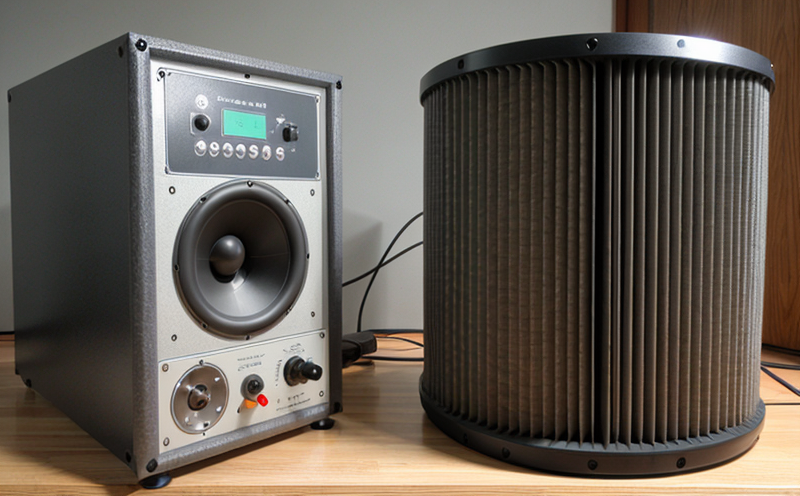ISO 20283-6 Vibration Testing of Main Propulsion Engines
The ISO 20283 series provides comprehensive guidelines for testing and performance evaluation of marine diesel engines. Specifically, ISO 20283-6:2015 focuses on the vibration testing of main propulsion engines in marine environments. This standard is crucial for ensuring that engine components meet stringent noise, vibration, and harshness (NVH) requirements, which are critical factors in maintaining reliability, performance, and comfort aboard vessels.
The test aims to evaluate the structural integrity and operational stability of main propulsion engines under real-world conditions. By subjecting these engines to controlled cyclic loading, this ISO standard helps identify potential issues early on, thereby preventing costly repairs and unscheduled maintenance at sea. The testing process is designed to simulate various operating scenarios that engines encounter during their service life.
The vibration testing procedure outlined in ISO 20283-6 involves placing the engine under a series of predefined load cycles, which are intended to replicate typical operational conditions such as startup, idling, part-load operation, and full-rated power. During these tests, highly sensitive instrumentation is used to measure displacement, velocity, and acceleration at multiple points across the engine structure.
For accurate results, it’s essential that the equipment being tested follows precise manufacturing specifications provided by shipbuilders or original equipment manufacturers (OEMs). Pre-test preparation typically includes cleaning and inspecting the engine for any visible damage. Additionally, all accessories like couplings, shafts, and propellers must be removed before testing to avoid interference with the vibration data.
The instrumentation employed during ISO 20283-6 tests includes accelerometers attached directly to key areas of the engine where vibrations are likely to occur. These sensors provide real-time feedback on the engine’s dynamic behavior throughout the test cycle. After completing all prescribed load cycles, engineers analyze the collected data using advanced signal processing techniques.
One significant aspect of this test is its focus on reducing noise and vibration levels within acceptable limits specified by international maritime regulations such as ISO 1940-2:2015 and ISO 1948-2:2016. Compliance with these standards ensures that the vessel remains comfortable for crew members while minimizing potential interference with other onboard systems.
Another critical factor in achieving accurate test results is ensuring that the environmental conditions during testing closely mimic those experienced by engines at sea. This includes maintaining consistent temperature and humidity levels, as well as simulating typical ambient noise levels aboard ships. Such controlled environments help ensure reliable data collection and interpretation.
In summary, ISO 20283-6 vibration testing plays an integral role in the quality assurance process for marine diesel engines. It helps manufacturers identify potential flaws early on, ensuring product reliability throughout its lifecycle. By adhering to this standard, shipyards can produce more efficient, quieter, and safer vessels, ultimately enhancing both operational efficiency and passenger comfort.
Why It Matters
The importance of vibration testing cannot be overstated when it comes to maintaining the integrity and performance of main propulsion engines. Unchecked vibrations can lead to premature wear and failure of critical components such as bearings, gears, and shafts, resulting in costly repairs or even complete engine replacement.
From a safety perspective, excessive noise and vibration levels pose risks not only to crew members but also to passengers aboard commercial vessels or cruise ships. Comfortable travel experiences are paramount for both types of clientele, and addressing NVH issues early through rigorous testing ensures passenger satisfaction.
In addition to enhancing comfort and safety, adhering to ISO 20283-6 helps shipowners comply with stringent maritime regulations set forth by bodies like the International Maritime Organization (IMO). Non-compliance can result in fines or delays at ports around the world. Compliance also enhances a company's reputation for delivering high-quality products and services.
The test results generated from ISO 20283-6 serve as valuable tools for continuous improvement efforts within manufacturing facilities. Engineers use these insights to refine design processes, optimize materials selection, and implement improvements that extend engine lifespan while improving overall efficiency.
Why Choose This Test
- Ensures Compliance with International Standards: Adhering to ISO 20283-6 guarantees that your marine diesel engines meet the stringent requirements set forth by international maritime authorities.
- Promotes Safety and Comfort: By reducing noise and vibration levels, this test enhances both crew and passenger safety while providing a more pleasant travel experience.
- Fosters Continuous Improvement: The data collected during these tests provides actionable insights that can be used to refine manufacturing processes and enhance engine durability.
- Reduces Downtime and Maintenance Costs: Early detection of potential issues through thorough testing helps prevent costly repairs and unscheduled maintenance at sea.
- Enhances Reputation: Demonstrating adherence to high-quality standards can significantly boost a company's reputation among clients and partners in the maritime industry.
Customer Impact and Satisfaction
The implementation of ISO 20283-6 vibration testing has far-reaching benefits for shipbuilders, engine manufacturers, and operators alike. For customers who invest heavily in marine diesel engines, the peace of mind that comes with knowing their products have passed rigorous tests is invaluable.
Crew members aboard vessels equipped with engines that undergo this type of testing report fewer complaints about noise disturbance and smoother operation. Passengers on cruise ships or commercial passenger vessels experience smoother rides due to reduced engine vibrations. These improvements contribute directly to higher customer satisfaction scores across the board.
Operators benefit from extended engine lifespans, lower fuel consumption rates, and reduced operational costs associated with planned maintenance schedules based on test results rather than arbitrary time intervals.
Overall, ISO 20283-6 vibration testing not only meets regulatory requirements but also sets a new benchmark for excellence in marine diesel engineering. By prioritizing this type of testing, companies demonstrate their commitment to quality and customer satisfaction, fostering long-term relationships within the maritime industry.





